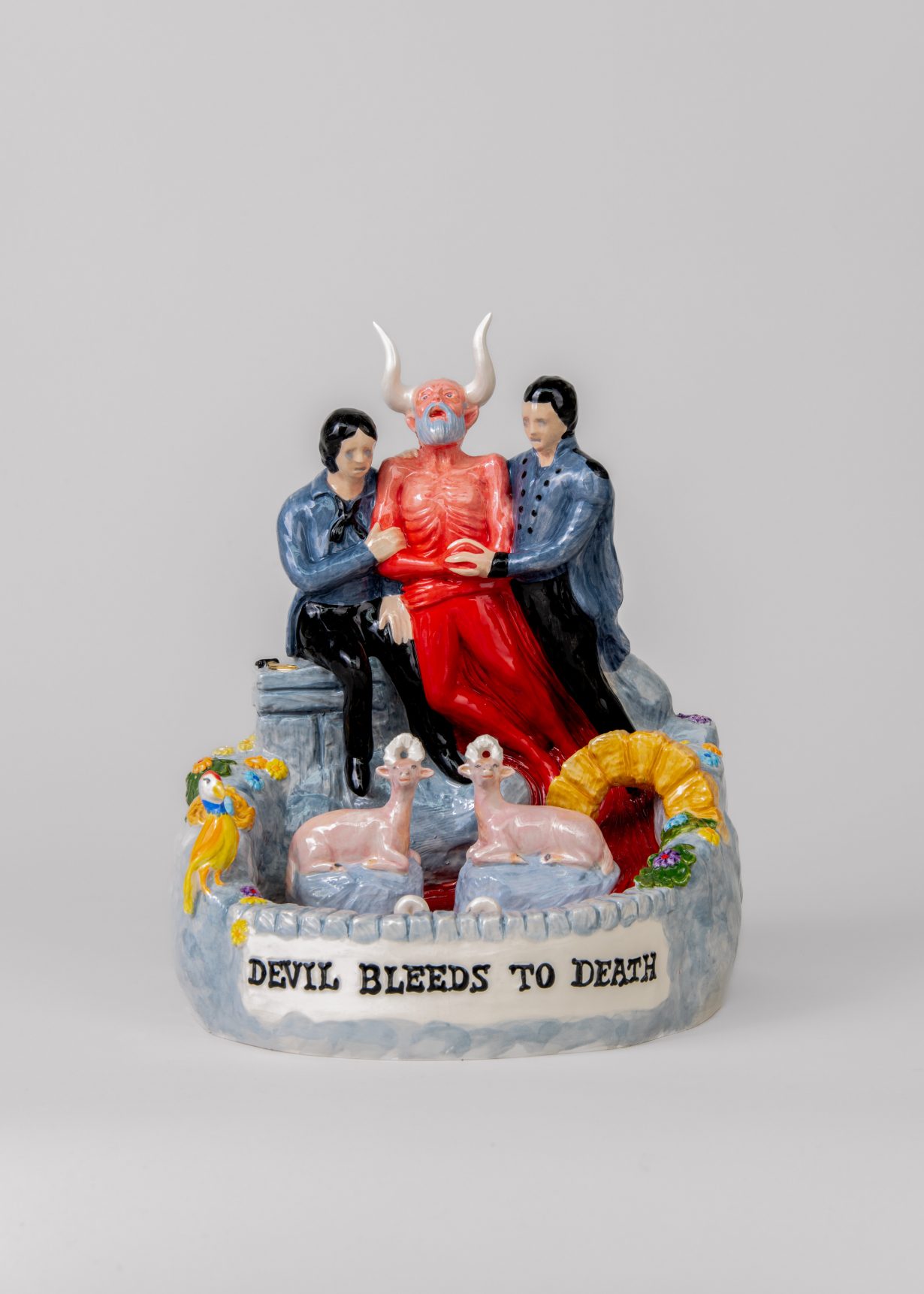The rock musician’s exhibition at Xavier Hufkens, Brussels extends his current sagelike persona into the artworld
Where his fans stand on rock musician Nick Cave’s transition – from 1980s postpunk hellraiser imagining a flyblown Southern Gothic full of brimstone and retribution, to his current persona as a sage, maybe agnostically Christian humanist, bearing witness to the depths of human tragedy and the promise of redemption – seems to depend on whether you really believe him or not. ‘I am finding your religious turn and proselytising difficult,’ grumbles one questioner on the singer’s I’ll-answer-your-questions website. To such misgivings Cave concedes humbly that it’s tricky for him too; that his faith is intuitive, often sceptical and profoundly personal.
Something of this wager with belief (his and ours) comes across in Cave’s surprise excursion into ceramic art born, apparently, on a lockdown morning, out of the urge to make a sculpture of the Devil. On a long, broad plinth in Xavier Hufkens’s skylit top-floor gallery, we’re presented with a series of 17 glazed and painted ceramic figurines and scenes, which narrate the birth, life and eventual death of Satan himself. Cave’s Devil is less Miltonian fallen angel and more a sort of everyman, all too human as he makes merry and falls in love, though still condemned to his fate as war-bringer and destroyer.
What’s oddest about these works, though, is Cave’s wry adoption of a style of ceramic art so domestic and so naive that it deflates the awesome and terrible nature of his subject. Cave borrows from the mantlepiece figurines of eighteenth-century English Derby pottery and, in particular, the ‘flatbacks’ of Victorian Staffordshire pottery – sentimental vignettes designed to be seen from one side, so that often the other was undecorated. The little child-Devil sleeping peacefully, protected by a bright red foal, is surrounded by pretty flowers (Devil Awakens, all works 2020–24). Around the feet of the happy couple of Devil Takes a Bride hop gold-glazed bunnies; the Devil is dressed in a smart white suit with a natty red cravat, she in a hat and a crinoline skirt, but topless, as her husband looks dotingly, if slightly bored, upon his betrothed.

Things do not go well, of course. Devil Kills His First Child sees him (dressed in in red cloak and belted gown, looking a bit too much like a clean-cut Jehovah’s Witness Jesus) raising a knife over his blond-haired son. Devil Rides to War depicts him in military pomp on a black, red-eyed horse, fist resting on hip, as blood flows around the skulls strewn around the ceramic base (the pose is borrowed from nineteenth-century flatbacks of Edward, Prince of Wales on horseback).
But Cave’s Devil has a moral conscience, as he tips from Devil in Remorse, head in hands, through to the agony of Devil Bleeds to Death, as a grey-bearded, emaciated Devil supported by two companions, while his blood drains into the quaint rockery below, a jolly parrot as ironic witness. And then, in Devil Forgiven, a now ashen, skeletal Devil lies on a shoreline, a little blond-haired boy kneeling to caress the monster, as the sun rises. In Cave’s world, sons forgive fathers.
It’s likely the case that Cave doesn’t need the artworld’s sanction, which makes his alternative Stations of the Cross strangely touching, the offerings of a humble amateur, even if famous elsewhere. Unthreatening in form, it reiterates without fuss the singer’s persistent attachment to an old-world moral universe, of flawed humanity, of vanity, desire, sin, despair and eventual redemption. Such beliefs might be anachronisms among the catastrophist orthodoxies that dominate much contemporary art. But Cave, it seems, is sticking with it, even if porcelain folk ornaments are one of the more unexpected ways to keep kicking against the pricks.
The Devil – A Life at Xavier Hufkens, Brussels, 5 April – 11 May
